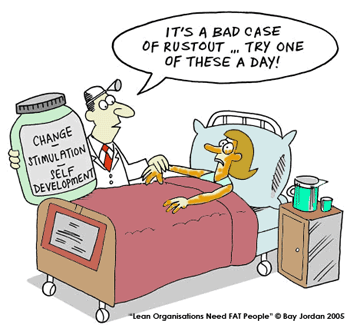The right way to manage change begins with a simple model but involves a process that can be complex and delicate. It entails careful planning, detailed design, and thorough implementation.

The Plan
Understanding the Change Needs- Your first step is defining the change you want to implement. Most important is defining the operational model: What do you want your organization's structure to look like? What roles need to be performed? How should future business processes look? What technology is needed?
The first requirement for success is keeping your goals realistic. Whatever the nature of the changes you're seeking, you need to know your organization's limits.
You also need to understand how change can be affected within your organization -- can the change be enacted at a business unit level and pushed down? Or should the change start with smaller groups (like project teams) and work its way up the organization?
Analyzing Readiness of Employees- The next stop is to assess how ready your organization is for change by analyzing three key factors:
• Stakeholders. Who stands to gain or lose the most through the changes you're planning, and who among the "losers" will present an obstacle? Who are the key change agents -- that is, who are the people that everyone else follows?
• Business processes. How radically will you change the way you conduct business? And what will it take to make that change?
• Employee skills. In what ways will your employees need to upgrade their skills? How many will need to learn new skills?
Next step is of Implementation and Selling the concept

Design, Implement and Sell
The design and implementation of organizational change are separate stages, but they are best seen as one continuous process, broken out into three streams: The communication side, the training side, and the incentives side.
Communication. Effective communication is a lot more than just giving people regular updates. People are naturally resistant to change, and you've got to sell them on the benefits of it. To communicate (i.e., sell) the change, do what any good marketing manager would do. Define segments and then develop key messages for each segment.
The key to communicating with stakeholders is to understand their pain-points. Addressing these pain-points should be a common thread throughout your communications.
Develop a strategy around the best medium for reaching everyone -- newsletters, e-mail, workshops, brownbag lunches, etc. -- and how often people will need to be reached. To reach larger audiences consider setting up monthly presentations with a forum for questions and answers.
No matter which media you choose, it is critical to communicate regularly but be sure to establish a schedule that you can keep. Also, for those people who are on the front lines driving the change, provide talking points on a weekly basis. This will allow them to provide consistent messaging and to speak with one voice.
Training. It is critical to give people the skills they will require through effective training. Training requirements should be planned around the specific skills employees will need and how quickly they can learn them. Take care in determining the best medium of instruction -- is it in a traditional face to face classroom setting? Or learning from a manual or computer tutorial? Or through a virtual seminar?
Maybe your needs are less complicated? If all you require is a low-level program for a simple change in a process, you might be able to deliver the training through a single group presentation or even send it out by e-mail.
For any complex change, however, a pilot of the training program is crucial. You don't want to run a costly and time consuming training program only to find it did not deliver the goods.
Incentives. Change can be greatly aided with the use of incentives, but designing the most appropriate incentives can be tricky. Incentives can be of the "carrot" or "stick" variety. Sticks can be very effective and certainly do not need to be that painful. For example, if taking a training class is part of the required change, present a list of people who have and have not attended training during a company meeting. The public dis-recognition might be just enough to get people to act.
Carrots, though, are better, positive incentives. It's important your incentive strategy be consistent with your organization's culture. What do your employees value, and how can that guide you in designing incentives?
Success
While successfully implementing change is difficult and requires careful planning and rigorous activity, and most of all, an understanding of people and how to change the way they do things, it can be done. Doing it right means you only have to do it once. Doing it wrong? Well, ... we all know the answer to that one.
Source: http://www.cioupdate.com/insights/article.php/3348041
Regards,
GlobalHunt India
http://www.globalhunt.in

1 comment:
The title of this article, ""People Management is the Key to Managing Change", says it all.
If management has managed their employees properly, those employees will have long since taken full ownership of their workplace and be fully committed to its success, no matter what it takes. If they haven't, no change management strategy will correct that deficiency.
To learn the whats and whys of a superior way to manage people, read "Leadership, Good or Bad?
Best regards, Ben
Author "Leading People to be Highly Motivated and Committed"
Post a Comment